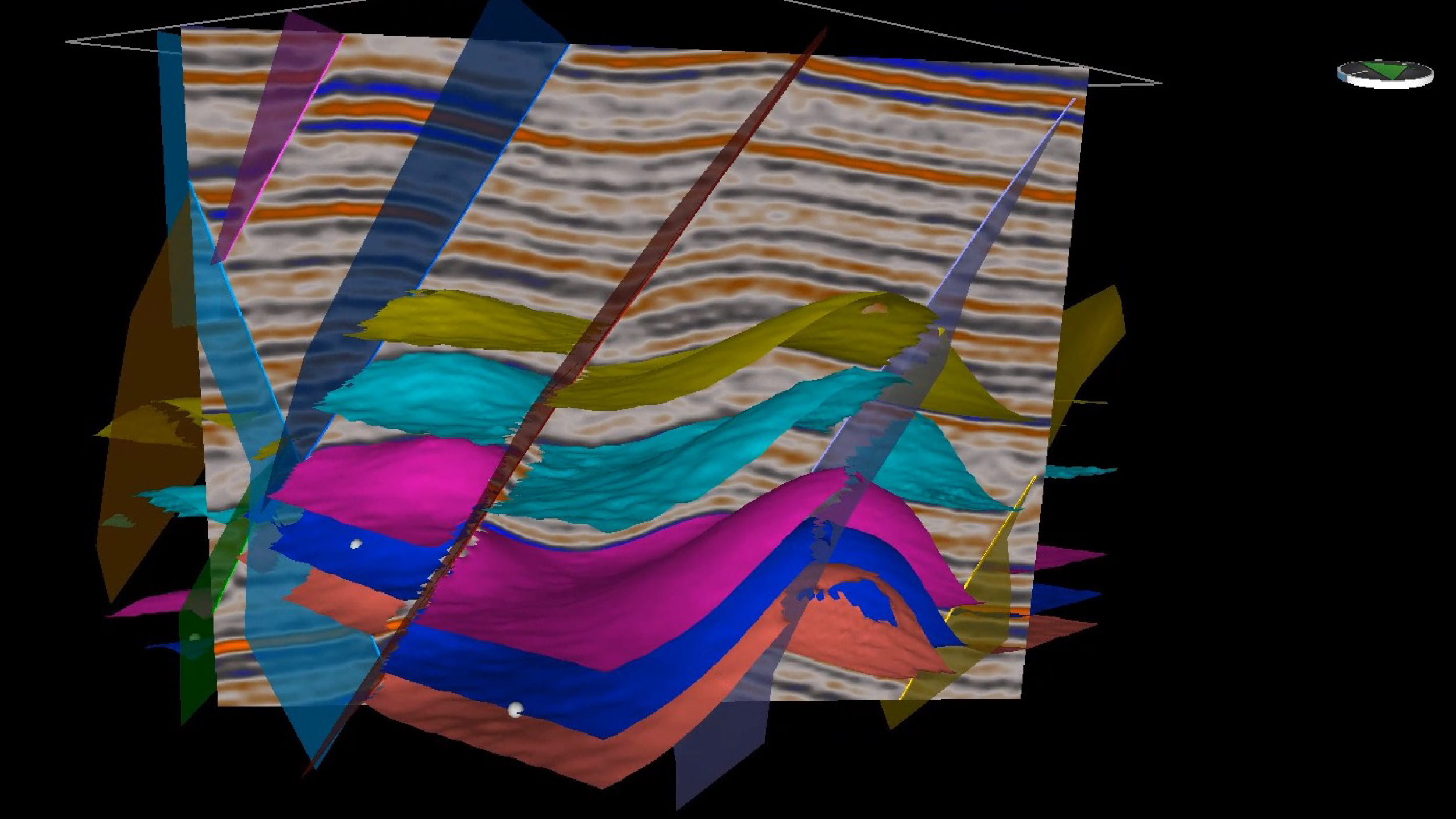 Search
Search
 Search
Search

The traditional seismic interpretation method uses many single-z horizons to represent complex multi-z structures like reverse and thrust faults, overturned beds, and salt bodies. This approach can lead to frequent switching between these horizons which leads to an excessive number of mouse clicks and interpretation issues.
DecisionSpace® 365 Geosciences Suite’s Seismic Interpretation software offers a unique and powerful multi-z horizon interpretation solution that helps enable geoscientists to accomplish prospect generation and drilling sweet-spot identification in these complex geological settings with greater efficiency to a higher level of confidence.
The intuitive multi-z interpretation functionality can enable faster and more accurate trap definition when dealing with areas of reserve or thrust faults and complex salt structures leading to more accurate reserves forecasting. Additionally, the full-volume interpretation capability reveals stratigraphy and reservoir quality insights from the entire seismic volume for optimal well landing.
As well as being available on the cloud, the same great software is also available as part of our on-premise equivalent, DecisionSpace 10ep. You get to choose what works best for you.
Let’s take a look at some of the new developments in the latest release.
Our enhanced interpretation solution produces multi-z horizons that can more accurately represent subsurface formations containing reverse or thrust fault structures. In this scenario, the multi-z horizon can contain an unlimited number of layers following a geological “superposition” rule that represents different fault blocks instead of using many unrelated single-z horizons in the traditional method. Intuitive manual picking and auto-tracking of each layer honors the geological relationships across all layers thus leading to a more efficient workflow, a higher quality of interpretation, and minimum repetition of work. In addition, visualization of on-the-fly thickness between layers provides a quantitative validation of both vertical and horizontal displacements along the fault blocks. Furthermore, on-the-fly amplitude values extracted from the seismic volume in addition to a Z value of every layer empowers geoscientists to not only ensure interpretation consistency, but also accomplish prospect screening while interpreting by observing amplitude changes in relation to structural conformance.
Salt body interpretation can be one of the most time consuming and cumbersome processes in the deepwater prospect generation and evaluation workflow. The traditional method uses an even number of horizons that must be cross interpreted in pairs of top and base salt to represent the sealed salt body. With our enhanced multi-z horizon solution, the salt body is now interactively highlighted on the seismic section as you interpret it. From initial interpretation, through base case interpretation, to multi-scenario interpretations, a combination of powerful auto-layer and body-picking modes assists you to accomplish your task with ease. Tasks like editing the edges of salt bodies when interpreting and evaluating multiple scenarios can be accomplished in fewer mouse button clicks and still yield an interpretation that makes geological sense. Moreover, auto-tracking of the salt’s top-most layer provides a detailed structure where subtle changes can be accounted for in the subsequent velocity modeling and migration steps as part of an interpretive processing workflow.
Now, more than ever before, geoscientists want to gain insights into stratigraphy and reservoir quality from the entire seismic volume instead of from a few seismic reflectors. Our multi-z horizon interpretation solution empowers geoscientists to achieve full-volume interpretation by placing seed points to auto-track seismic events that represent different geological ages from the seismic volume. The integration between multiple views of the Section, Map, and Cube allows geoscientists to effectively explore structure and amplitude changes across the layers through a seismic cube that reveals the evolution of subsurface structure and stratigraphy over geological time. Furthermore, the horizon layers honor the seismic onset and capture the true amplitude and areal extent of seismic events which is critical to effective reservoir characterization.
The DecisionSpace 365 Geosciences Suite's Seismic Interpretation software helps geoscientists streamline their workflows with advanced reverse and thrust structure interpretation, deep water salt interpretation and full-volume horizon interpretation. This helps to drive more accurate and efficient outcomes and to unlock the full potential of areas of complex geology.
Expert: Nam Nguyen | Seismic Interpretation Solution Owner
Sinan Tufekci | Seismic Interpretation Product Owner